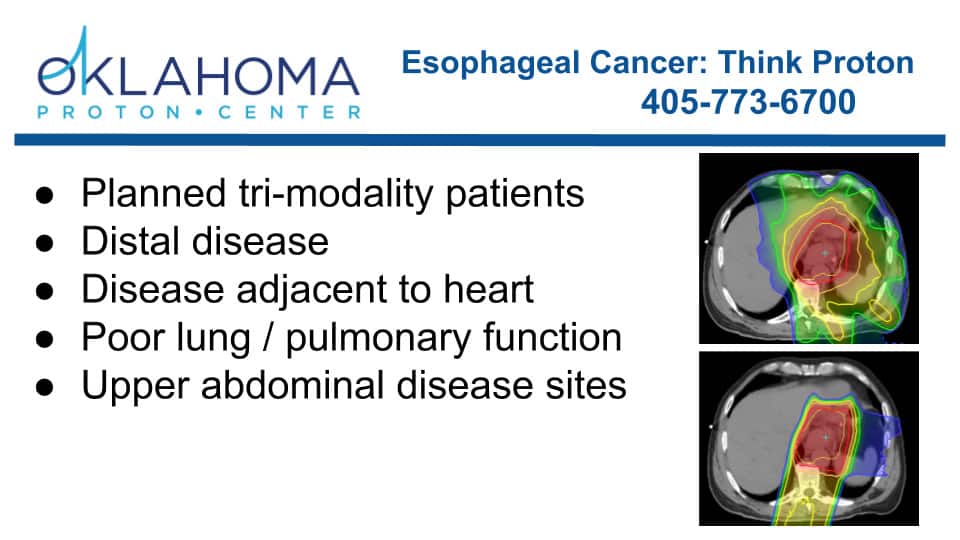
DISCLAIMER / About the Blog – Please read once if you haven’t.
The month of April is Esophageal Cancer Awareness Month. So today we’ll look a bit closer at Proton Therapy and when it can be effectively utilized in this disease. Esophageal cancer will be diagnosed in about 18,000 new cases this year in the US. Over the past 30 years, its incidence has increased by 600 percent making it one of the fastest rising cancer diagnoses.
Treatment for esophageal cancer is difficult. Cure rates are not high enough and we must continue to raise awareness and education levels regarding options for treatment and to continue to push forward across all treatment modalities (surgery, medical oncology / chemotherapy, and radiation).
Today we’ll look at Proton Therapy for esophageal cancer. It’s now included in the NCCN Guidelines as an appropriate treatment option. There is increasing data showing it outperforms traditional radiation in terms of dosimetry (the radiation doses and plans) and in patient outcomes. It is an exciting area where we are using technology to fight for better outcomes.
Proton Therapy: A recognized developing option for esophageal cancer according to the NCCN Guidelines.
Some cases are stronger wins for Proton Therapy than others – not everyone is the same and not all plans benefit to same degree, but in general, doses to normal adjacent tissues are lower with proton therapy for most all cases where radiation is indicated. Below is a slide that we show to local area physicians illustrating a patient planned with both IMRT and Proton Therapy and a few features where Proton Therapy can have a large clinical impact consistent with the comparison plan shown on the right.
Loma Linda Study
A study from Loma Linda shows better targeting of the disease with less dose to the heart and lung using protons compared to IMRT or 3D radiation treatment . (Ref)
The pictures above show this difference. Studies can more precisely quantify the difference, but really, the pictures show what we know. The physical properties of Proton Therapy are better than photon radiation treatment.
MD Anderson Cancer Center Study
A study of 444 patients from MD Anderson Cancer Center found that Proton Therapy patients had the lowest complication rates when compared to 3D or IMRT treatment. (Ref)
It makes sense. Less radiation of normal tissues during the course of treatment leads to less long term side effects and an improvement for the patient to recover and bounce back from a large surgery.
It is not a fix all and we need more patients and more studies to help decide who benefits the most. Realistically, there are still too few patients with access to Proton Therapy and as a medical community we need to funnel the patients that benefit the most to this technology. But for esophageal cancer patients, Proton Therapy is one of the current main technologies that is showing that we can do better and that we can treat less and do more to improve outcomes for a very difficult disease.
Links:
Esophageal Cancer Awareness Association: Link
American Cancer Society Esophageal Cancer Page: Link
Dr. Mark Storey MD
Medical Director, Oklahoma Proton Center
